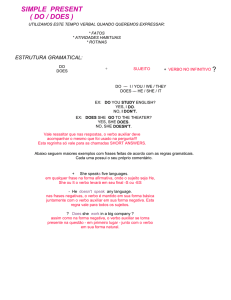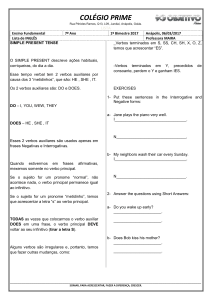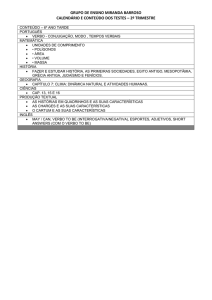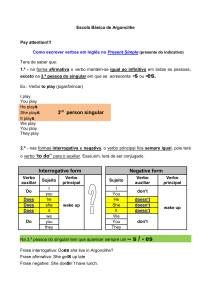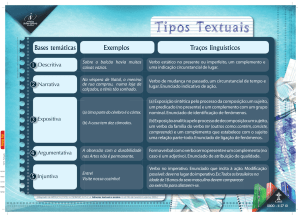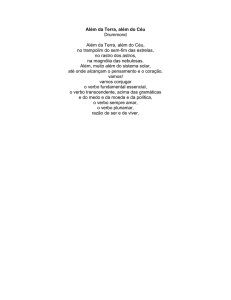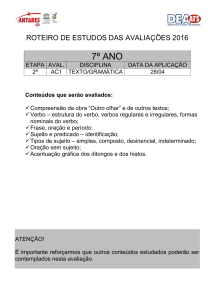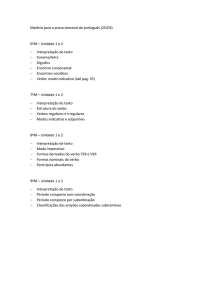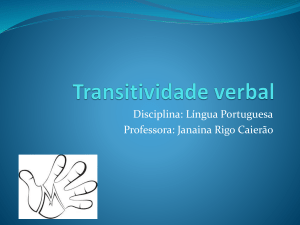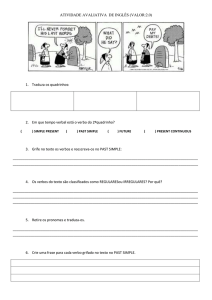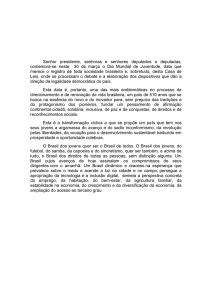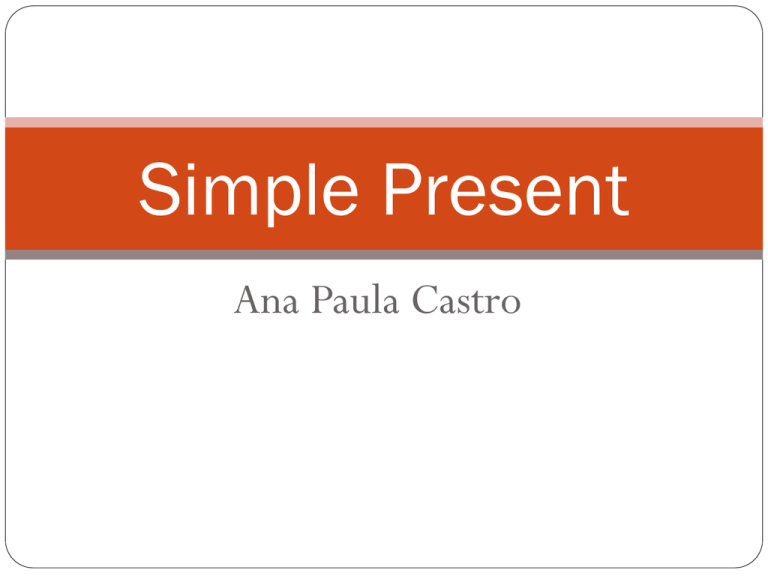
Simple Present
Ana Paula Castro
Simple Present Tense
Como usar?
O simple present pode indicar:
Uma ação de rotina;
Fatos;
Exemplos:
They study every day.
It rains a lot in London.
1. Forma afirmativa:
SUJEITO + VERBO + COMPLEMENTO
SUJEITO + VERBO + S / ES/ IES + COMPLEMENTO
(3ª pessoa do singular)
I work here.
He works here.
She has a lot of friends.
We have a lot of friends.
- Para a maoria dos verbos:
Adiciona +S
Ex: She works.
My brother runs.
It eats.
John dances.
- Para verbos que terminam em o, sh, ch, x, s:
(O Shampoo Cheiroso da Xuxa é Sujo)
Adiciona +ES
Ex: Mom washes.
My dad kisses the baby.
He watches TV.
She goes home.
- Para verbos que terminam em consoante + Y:
Retira o -Y e Adiciona +ES
Ex: Mary studies.
He cries.
2. Forma negativa:
SUJEITO + DON'T + VERBO + COMPLEMENTO
SUJEITO + DOESN'T + VERBO + COMPLEMENTO
(3ª pessoa do singular)
-They don´t go to the zoo lately.
-He doesn´t watch TV.
3. Forma interrogativa:
DO + SUJEITO + VERBO + COMPLEMENTO ?
DOES + SUJEITO + VERBO + COMPLEMENTO ?
(3ª pessoa do singular)
-Do you have sisters?
- Does Peter do his homework?
Obs.: Podemos fazer perguntas com WH-Questions
WH + Do/ Does + sujeito + verbo + compl. ?
Where does she have lunch?

